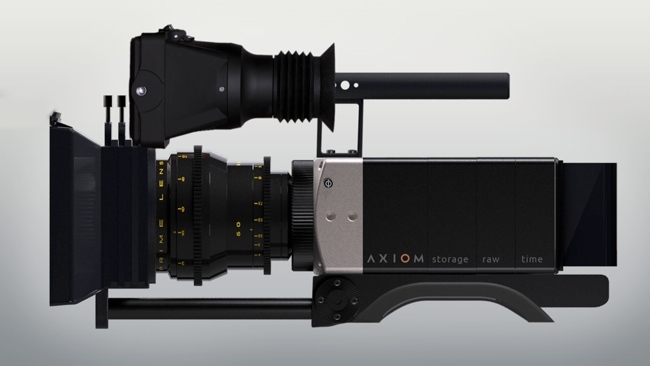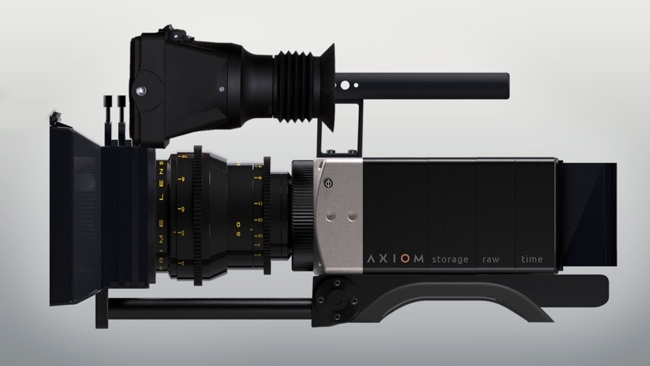
 Apertus Axiom
Apertus Axiom
I genuinely feel excited about the Apertus Axiom concept, especially having met Sebastien Pichelhofer and his colleagues who are the founders of this ambitious but, I think, well grounded project
I have absolutely no idea whether it will succeed because that all depends on the reaction of potential customers out there, and on the developers of not only software but quite specific hardware that will need to be designed to get this camera beyond an early prototype.
Nobody is going to get anything for nothing with this camera. You can't duplicate hardware at no cost. But, actually, you can't duplicate software at no cost, either. Or, more accurately, you can't write it for no cost. Just because it's so easy to duplicate software programs, it's very easy to forget that software takes time and effort to write.
Two sides to Open Source
What's wonderful about Open Source software is that it is open in the sense that there are no secrets, and sharing knowledge is enshrined in the idea of open software.
That's all fine and laudable, but where it falls down is that most successful business models are either based on keeping their "Secret sauce" a secret, or on something else that is completely unrelated to the software but is merely enabled by it. Whichever way you look at it, it's not easy to make money from a product that you give away.
So I would see the Axiom project as "open" in the sense of transparency rather than freedom-from-having-to-pay-ness. But what an opportunity this is.
Changing Times
Do you remember when there was a fashion for making cheap TVs with built-in VHS decks or, more recently, DVD players? There was always some resistance to buying these things because they were undoubtedly very convenient, but equally undoubtedly likely to go wrong. Why would you want to buy even a half-decent TV mated to a device that was inevitably going to reduce the life of the hybrid product?
And although it might not feel like this, it's going to be the same with cameras. Eventually, we'll be saying "why would you want to buy a camera with all the parts from the same manufacturer?".
Or, perhaps not. There are very good arguments on both sides.
Vertical Integration
Vertical integration - essentially making everything from the small parts to the software that knits everything together - is how Apple manages to make products that people love (because of their perceived high quality) and yet still make a decent margin on them. And it's why Apple's software - their operating systems and their drivers - work so well together. It's because they're designed together to work together.
You can't say that for Windows, but then Windows has a much harder task, which is that it has to work across such a huge range of products that it would be impossible to take them all into account in advance. Given this, it's surprising - and a huge achievement - that Windows works as well as it does.
Some distributions of Linux manage to work across a similarly wide range of devices, and it's from this springs this hope that an open source camera could work.
We've already seen here that it's getting easier to build cameras, because if you know where to look you can buy the parts. And these parts are not just nuts and bolts and individual components like resistors, capacitors and transistors: they're much more highly integrated than that. Which means that you don't need to buy a display screen and then write an operating system for it because you can buy the whole thing, fully working, ready for integration in your bigger design.
That doesn't mean you can do it without essential skills though.
So, you can imagine with a modular camera system that you might want to decode the data from the sensor differently, or you might even want to use a better a/d converter for the analogue signals coming off the sensor. You might want to have a 12G SDI module, or perhaps a dock for a new type of storage.
Breaking it Down
Once you start breaking it down, there are dozens of ways that you might want to put a modular camera together. What you throw away when you do this is the consistency and purity of a vertically integrated device. But what you gain, potentially, is a camera that grows and shrinks with your needs.
But it won't "just happen". An awful lot has to be in place before it does, including luck, good will, and the willingness of a sizable community to commit to a project that has no guarantees.
What's more, there's the question of how you make an Open Source hardware model work.
Hope for the Future
It certainly won't work by being free. It will have to be paid for. That's not unreasonable. But what gives this project hope and potential is that with such a modular system there are so many ways that people can take part, adding their own modules to the range, and enhancing the whole system.
And it's not just with hardware that people can contribute. It's software as well. Some of the modules are likely to use FPGAs - programmable processing chips that can be made to do any number of different things depending on the "instructions" they load at boot-up. So you won't even have to design hardware to have an input to the design of this camera.
So, now, we have to wait and see. We hope it succeeds, but that will just be the start. We'll keep a close eye on this project and we wish it luck.
Finally
In case you were in any doubt that this is a real project, here is a post made today on the www.apertus.org website about progress with the Axiom Alpha prototype.
Tags: Technology



Comments